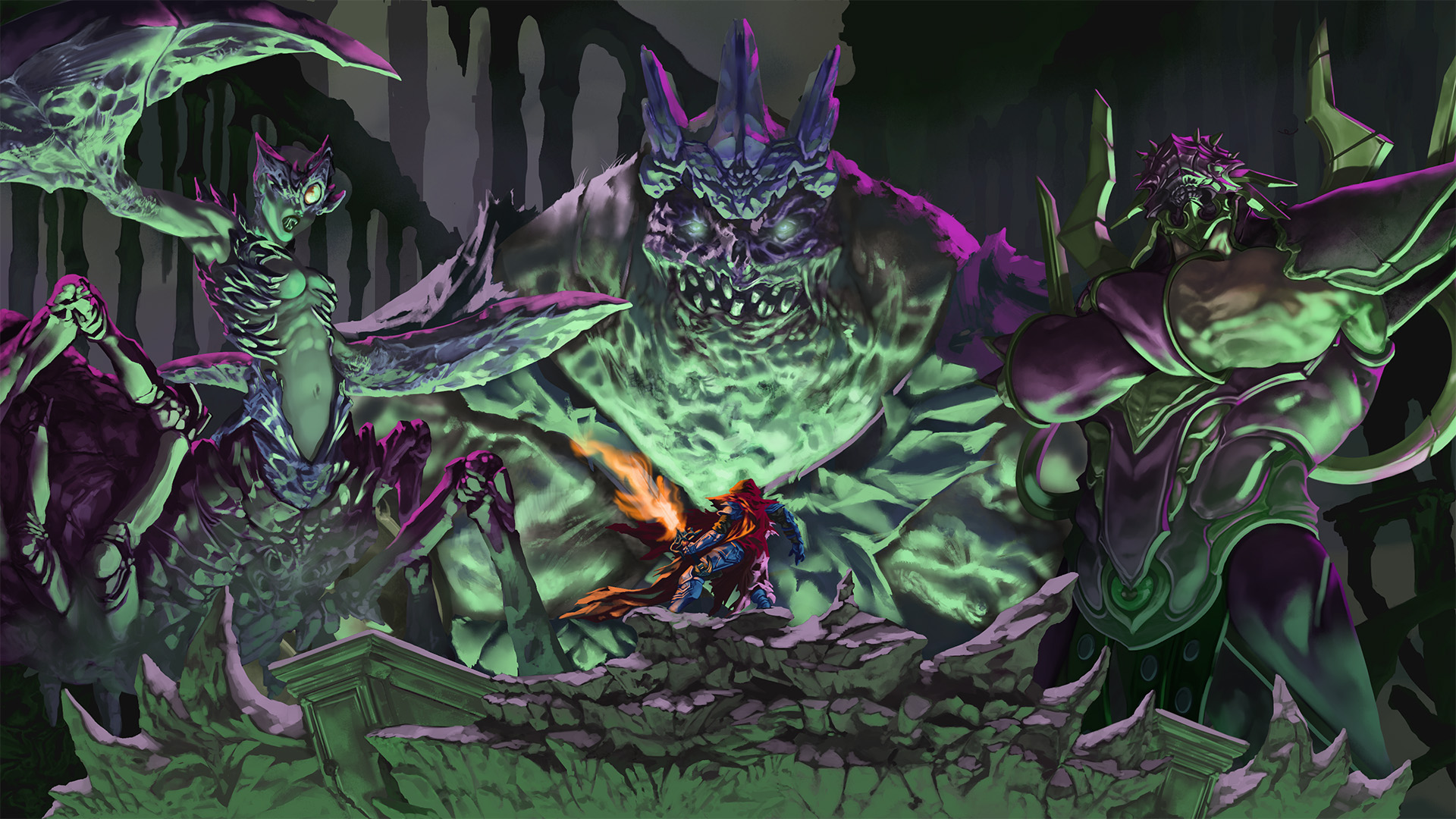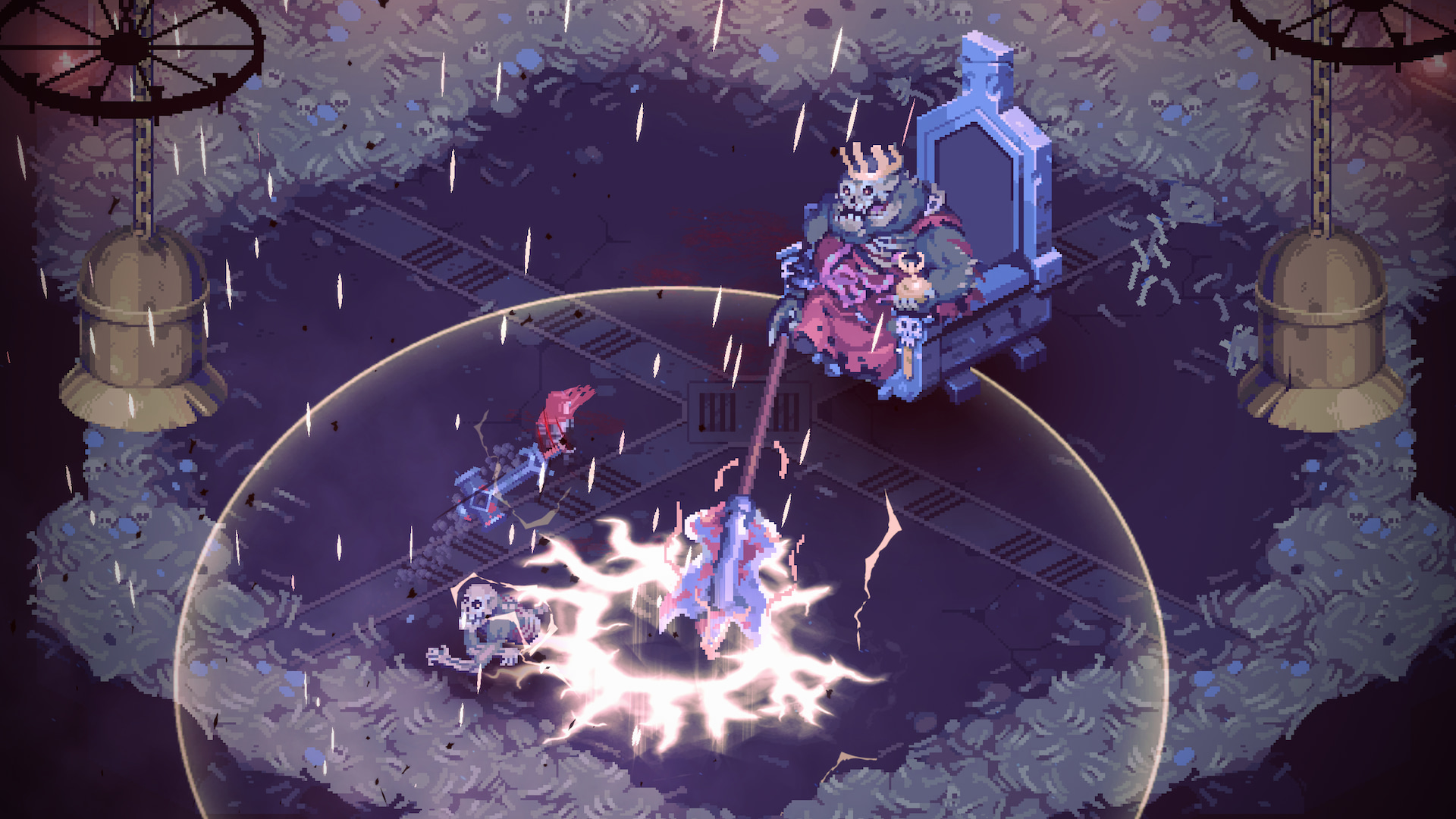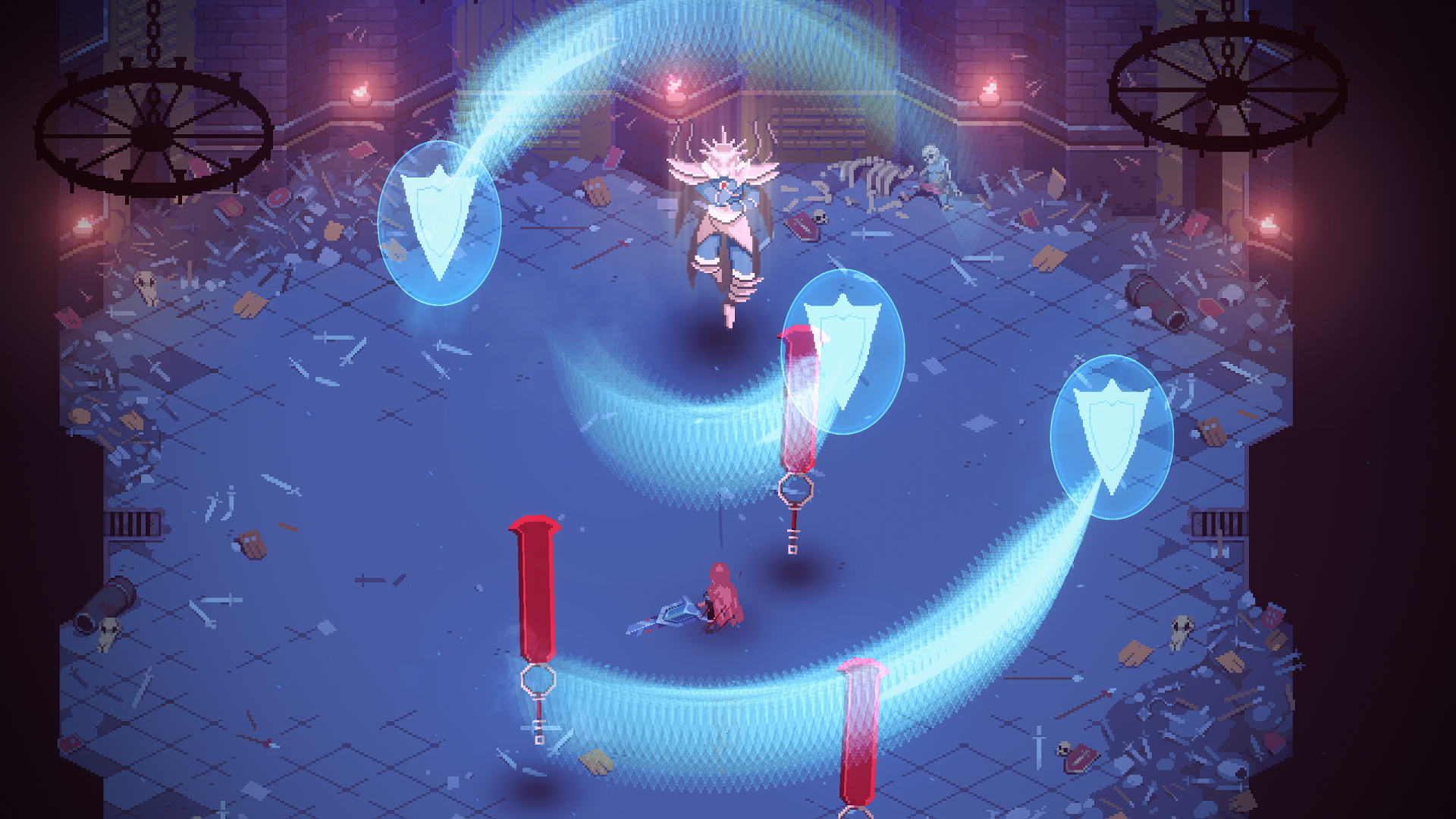Eldest Souls is an indie, boss-rush Souls-like that was released in June 2021. While we liked it then and saw how much love and care the developers put into every part of the game, but it had some rough edges that kept it from being much more than a well-constructed offering.
Today (May 2) sees the release of the free Depth of the Forgotten DLC, which is a great reason to come back to Eldest Souls or experience it for the first time. Unfortunately, it does not address any of the core problems with the base game. Some parts of the DLC even exacerbate those issues, turning what could have been a real step forward for Eldest Souls into a fun experience that won’t truly turn heads.
Eldest Souls Depths of the Forgotten Review: The Best is at the Bottom
As a boss rush title, Eldest Souls lives and dies on its boss fights. No amount of cool environments, new weapons, or equipment means anything if they aren’t fun to use in the game’s fights. Good thing that two of the three new bosses are the best in the game by a wide margin.
The first of those is Zylad, Lord of Steel, a master of multiple god-killing weapons imprisoned to keep the world safe, as there are no more gods in need of killing. The fight is fast, frenetic, and rewards aggression better than any other boss in the base game. It’s also visually stunning, from Zylad’s design and the look of his weaponry to his attack animations and their effect on his arena.
Learning his fight is equally enjoyable. He doesn’t have so much health that one mistake costs you 15 minutes, but he isn’t so squishy that endgame builds can melt him in a few seconds. His attacks are easy to read but hit like a truck, and they’re fast but, with a little knowledge, relatively easy to defend.
Zylad is an excellent opening to the Depths of the Forgotten DLC, as the fight puts Eldest Souls’ best foot forward without tripping over itself. The second boss, The Rejected Daughter, continues the trend.
The Rejected Daughter, a god-crafting experiment gone wrong, has the lower body of a spider and the upper body of a horrid humanoid woman. She’s no Quelaag, to be sure, and rather than having a sword, her arms are swords.
Fighting The Rejected Daughter is a different beast than challenging Zylad. She applies slow statuses, DoT damage, and other hindrances in addition to being incredibly mobile. She can move from one end of her arena to the other in a single step. Her attacks can also cover half the area, forcing you to react to tells with very little leadup. Once you know what attacks look like, it’s not a huge issue, but the window to actually avoid damage or status effects can be tiny.
I didn’t like the second boss in the Depths of the Forgotten nearly as much as I did its first, but it was still a much more enjoyable experience than the final boss in the DLC.
The Rotting Crown, one of the world’s final and most powerful kings, was exiled to the deepest reaches below the Citadel, where he rotted away, surrounded by the other dead and forgotten experiments. His lore is interesting, but the fight is everything wrong with Eldest Souls‘ combat and boss design.
The Core is Rotten
The biggest sin Eldest Souls commits with its combat is not allowing you to dodge through bosses. While you can’t do so in other 2.5D action RPGs like Hades, the arenas where you fight are usually large enough for you to maneuver around them. Not so in many of Eldest Souls‘ worst fights. The arenas are small, the boss large. Their hitbox extends to the top of their model and a little above.
There are other places where you can dodge behind something because it exists above or in front of you, but this is because of the static geometry in almost every case. There is no way to dodge behind a boss’ model, and because a boss can move your character or block them by not moving, you can quickly get stuck in a corner where one of the walls is a secondary boss.
This issue doesn’t always ruin a fight, but The Rotting Crown not only showcases how awful the experience is, it also showcases everything else that doesn’t work.
- The arena is too small for the size of the boss. The Rotting Crown takes up a good fourth of the area where you fight him, meaning one wrong move will see you stuck either in a corner or dodging into a place that should be traversable, only to lose your dodge charge because you dashed straight into the pixel at the corner of the boss’ hitbox.
- The mobs that spawn can move through and behind the boss. There’s a way to remove the adds, but they will continue to spawn. Unlike the player, they can move through the boss’ hitbox and even exist inside it, meaning you might take damage from one of the crawling mobs and have no way to defend because there was no way to know the enemy was there.
- Combine the two above problems with a shielded phase that enhances the various AoE attacks, and you’ll need no mistakes and a hefty dose of good RNG to make it out alive.
- The Rotting Crown has entirely too much health. Even in base New Game, a failed fight would take me five to 10 minutes, depending on how far I got. Add in all the annoying ways to die in the fight, and the longer it went on, the less fun I had.
If The Rotting Crown had been the first boss of the DLC, I think a lot of players would drop it long before they got to the good fights. Thankfully, that’s not the case, and the rest of the game remains quite enjoyable.
The Best of the Rest
The new environments are attractive, and the pixel art is still top-notch. Does it rival the best pixel art games on the market? No, but it doesn’t need to. Everything here is visually distinct, aesthetically pleasing, and creates the curiosity and wonder a Souls-like environment needs to shine.
The level design isn’t complex, with the new areas consisting of elevators, scripted boat rides, and a couple of angular rooms and staircases. As the bosses are always the main attraction in Eldest Souls, that’s not the worst thing, but it would have been nice to see the developers push the envelope on the crazy evil laboratory idea.
The music is good, sometimes skirting great, but I can’t say any of the tracks in either the main game or the Depths of the Forgotten DLC stuck with me. They suit the fights they accompany and provide the proper atmosphere and audio aesthetic but don’t do much more.
You’ll meet a new NPC who does much more than most of the other NPCs to discuss the lore without being too overt about it. I felt more for him than any of the other characters as, unlike them, he has no real control over his fate. As such, his tragedies are harder to stomach.
Both the new weapons and new boss shards are nice touches, as while they don’t fundamentally change how a build plays, they all offer powerful effects that can have you reevaluating your setup and playstyle.
Actually reaching the DLC was one of the best parts of the experience, as well. The world doesn’t have the density or complexity of any of the mainline Souls games, so it didn’t take too much exploring to find the way to the first elevator. Discovering the path to a Souls DLC is something of a tradition the community takes great pleasure in, so it was a treat to have a little of that here.
Eldest Souls Depths of the Forgotten Review — The Bottom Line
Pros
- A pair of enjoyable boss fights.
- The new weapons and abilities are fun additions.
- Cool new environments, music, and characters.
Cons
- It has the same core issues as the base game.
- A real stinker of a final boss.
- It doesn’t do anything revolutionary.
Eldest Souls Depths of the Forgotten is essentially more Eldest Souls. It isn’t very long, clocking in at about two hours with all the dying to The Rotting Crown, but my first playthrough of the base game wasn’t much less than six, and subsequent runs quickly cut to two hours as well. Still, thanks to the generally enjoyable gameplay loop of the base game, the DLC is also a mostly fun experience.
If you already own Eldest Souls, there’s no better reason to start a new save and make your way through to the Depths of the Forgotten. If you’ve never played the game before, the same is doubly true. There is plenty about the core game that will annoy, but none of it is a dealbreaker, and because this DLC is free, picking up the base game is an easy recommendation with the caveats mentioned.
[Note: Fallen Flag Studio provided the copy of Eldest Souls used for this review.]










Published: May 2, 2022 01:29 am